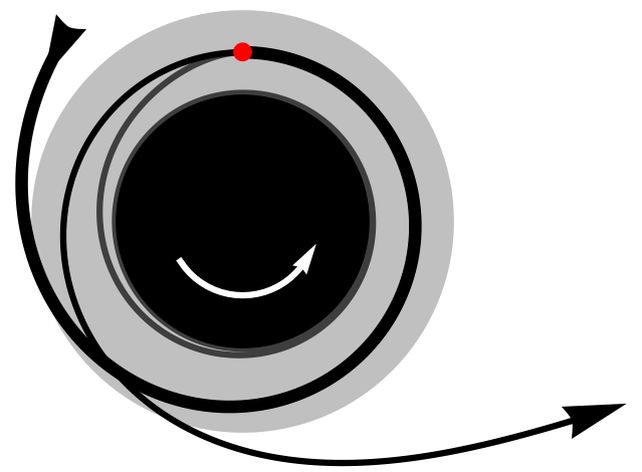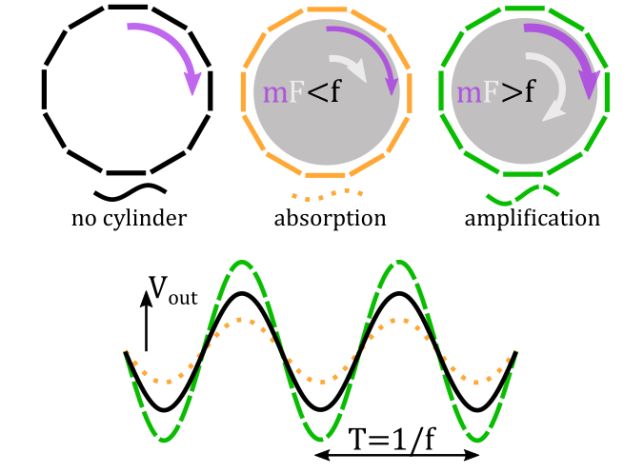Researchers have created the first laboratory analog of the 'black hole bomb', a theoretical concept developed by physicists in the 1970s.
If there's one thing black holes are known for, it's their insatiable, inescapable gravity. Stuff goes into a black hole. You're not really going to get much out.
From beyond the event horizon, this is, as far as we know, true. But from the space around a black hole, you might be able to get something. As Roger Penrose proposed in 1971, the powerful rotational energy of a spinning black hole could be used to amplify the energy of nearby particles.
Then, physicist Yakov Zel'Dovich figured out that you didn't need a black hole to see this phenomenon in action. An axially symmetrical body rotating in a resonance chamber, he figured, could produce the same energy transfer and amplification, albeit on a much smaller scale.
Later work by other physicists found that, if you enclose the entire apparatus in a mirror, a positive feedback loop is generated, amplifying the energy until it explodes from the system.

This concept was named the black hole bomb, and a team of physicists led by Marion Cromb of the University of Southampton in the UK now claim to have brought it to life. A paper describing their experiment has been uploaded to preprint server arXiv.
It doesn't, just to set your mind at ease, pose any danger. It consists of a rotating aluminum cylinder, placed inside layers of coils that generate magnetic fields that rotate around it, at controllable speeds.
First, we need to talk a little bit about the ergosphere of a black hole – the space outside the event horizon. We know that gravity warps space-time. The gravitational field of a black hole is so strong that it doesn't just warp space-time, it drags it along with its rotation. This is called frame-dragging.
When particles travel through gravitationally affected space-time, they just kind of zip along at their own speed. But if that space-time is moving, and the particles travel in the same direction as that movement, they appear to travel faster to anyone outside that moving space-time – a bit like walking along a travelator at an airport.
When the particle emerges from the moving space-time, it has more momentum.

We can't experimentally replicate this gravitational effect; what the team's experiment does is simulate it, using magnetic fields as a proxy for the particles, with the coils around the system acting as the reflector to produce the feedback loop.
When they ran the experiment, they found that, when the cylinder is rotating faster than, and in the same direction as, the magnetic field, the magnetic field is amplified, compared to when there is no cylinder. When the cylinder rotates more slowly than the magnetic field, however, the magnetic field is dampened.
This is a really interesting result, because it demonstrates a very clear amplification effect, based on the theories described decades ago.
"The system satisfies the experimental conditions speculated by Zel'dovich for the observation of spontaneous generation and also the conditions outlined by Press et al. for black hole bombs," the researchers write in their paper.

"The experiments presented here are a direct realization of the rotating absorber amplifier first proposed by Zel'dovich in 1971 and later developed by Press and Teukolsky into the concept of black hole bomb."
Because we can't probe black holes directly, analogs such as this are an excellent way to understand their properties. Determining any potential practical applications is going to require a lot more development and testing.
For now, however, the experiment could represent a significant step towards better understanding the physics of the most gravitationally extreme objects in the Universe.
The team's preprint is available on arXiv.
